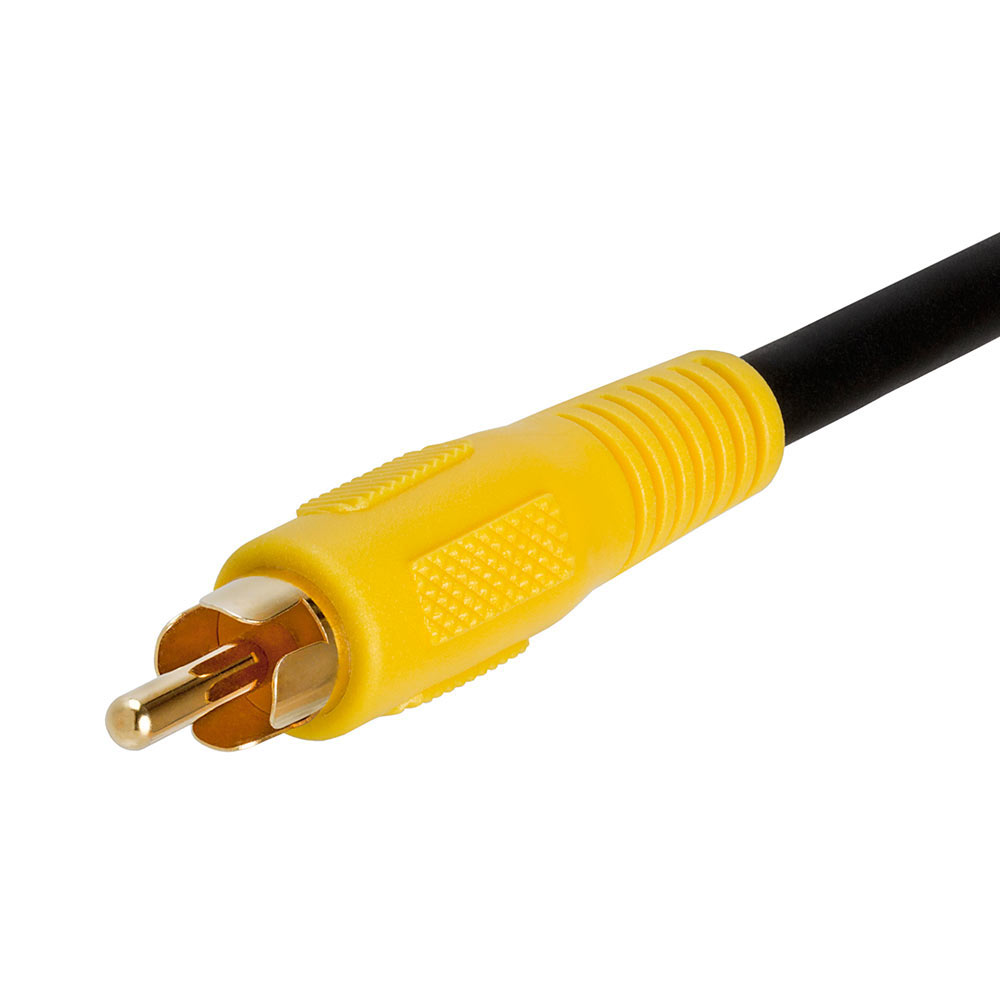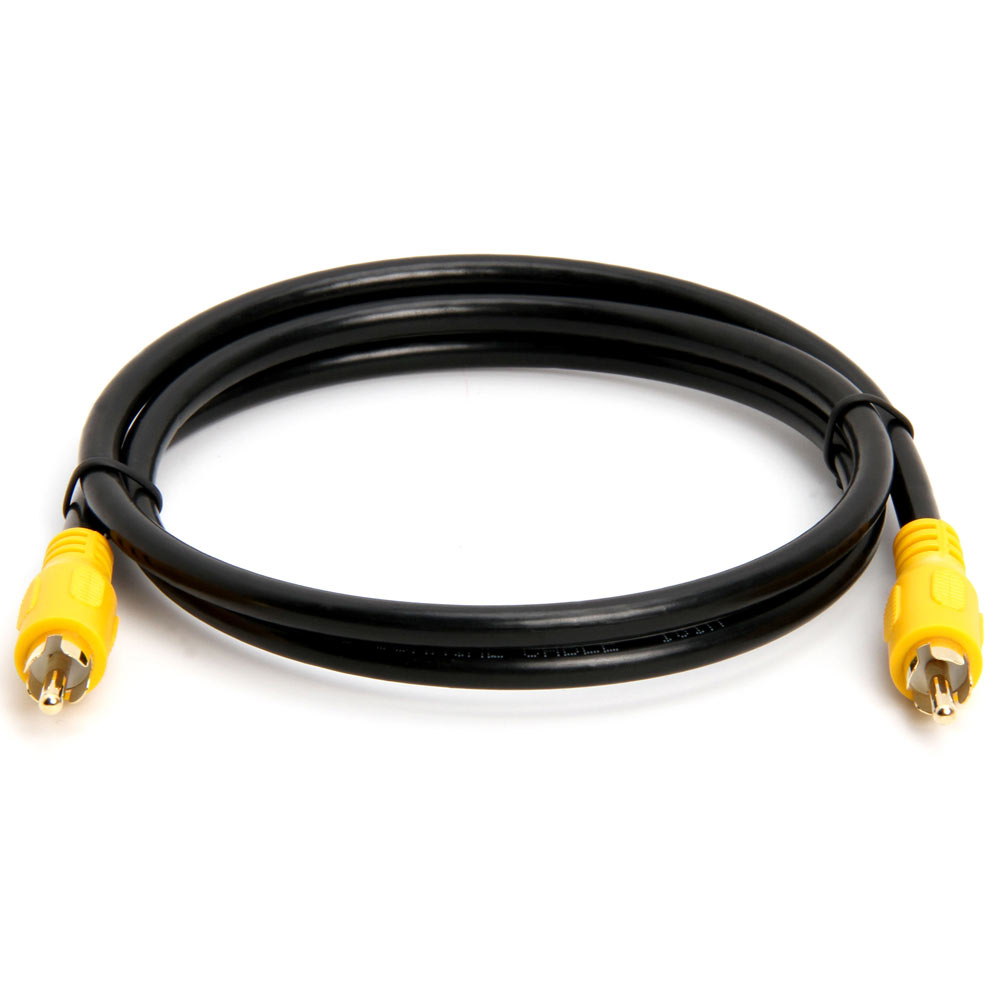Digital Coax Cables
What is a digital coax cable?
A digital coax cable is a type of cable that can transmit pretty much any digital or electrical signal, but are most commonly used for transmitting audio and video signals. Digital cables aren’t digital in themselves, but they do a good job at transmitting a digital signal through pulses of electricity. Digital coaxial cables are similar to standard coaxial cables, which are constructed with a central wire wrapped by insulating material, a metal shield and a plastic casing, with the exceptions that the digital cable is better protected from interferences, have a higher impedance(opposition that a circuit poses against a current), and can handle a wide range of electrical frequencies. A digital coaxial interconnector is similar to that of an RCA cable, but the digital cable carries and electrical instead of an analog signal. The cable is thicker than the usual audio cable because of its extra shielding, and is usually more expensive than the typical RCA cable.
What is the difference between a digital coax cable and an RCA audio cable?
The difference between the digital coax cable and the RCA cable is really in the shielding. The digital cable contains extra shielding to prevent interferences in the signal. Also, RCA cables don’t have bandwidth that the digital coax (DC) cables have. If you try to use a RCA connector, you will discover that the signal will start to fade, especially if you run the wire over long distances. These signal interferences will often cause a stuttering in the audio because the pieces of digital information aren’t being read on a continuous basis. The only time when you may not see a difference is when you are running the cable across less than a mere three feet. Because this is not a common occurrence, signal interferences are common when using the RCA cable. Basically, using the digital cable is a much better option.
Cable Standards
There are two different connector standards used in digital coaxial cables. These are the S/PDIF and AES-EBU. However, S/PDIF is significantly more widely used, and for the purposes of Cmple.co, will be the only relevant cable to speak of. S/PDIF stands for Sony/Phillips Digital Interconnect Format, and was developed by Sony and Phillips as a method of transmitting digital signals. S/PDIF interconnects different components in home theater systems and other digital high fidelity systems. It is based on the professional AES3 interconnect standard. It can carry two channels of PCM audio or compressed surround sound systems such as Dolby Digital. It is a “data link layer” protocol and a set of physical layer specifications for carrying signals between devices and components over digital or optical cables. Yes, the S/PDIF standard can also be used with TOSLink optical audio technology. In the digital coaxial cable, the S/PDIF connection is made using an RCA connector.
Problems with Digital Coaxial Cables
There are several problems that can come up when using a coaxial system. Firstly, coaxial circuits are susceptible to radio frequency interference (RFI) and electro-magnetic interference (EMI). Both RFI and EMI can create a “humming” in the sound if there are any preexisting problems with the system or the ground loop, because the humming transfers between the different components in a coaxial system. This can be an inconvenient problem because even the best coaxial cables (sold at Cmple.com) can encounter this problem. One way to avoid such issues is to try not to run devices that could transmit a radio signal or other kind of signal that could cause interferences within the cable.
Which devices use digital coax cables?
Pretty much any device in your home theater system will enable the use of this kind of cable. This is because they are used to transmit both the video and audio signal. They are also used in some CD players, but TOSLink technology is more commonly used in those devices. Some devices that use digital coaxial technology are televisions, game consoles, connections from media recording devices such as cameras and camcorders.
Should I use a digital coax cable or a TOSLink Optical cable?
This really depends on what you are using the cable for, because there are situations when digital audio is superior, and others with the TOSLink technology works better. The optical cables are very fragile and cannot be abruptly bent or kinked otherwise there will be serious problems with the connection and possible damage to the cable. If the cable is being run around corners or in weird or sharp directions, then the digital cable is a better choice because you have few limitations in the way that these cables can be set up because they are flexible. However, digital cox technology is not a distance-savvy signal. Over a long distance, the optical audio technology works much better. However, for most home theater usage, digital coax cables will suffice and do the job perfectly.
What are some features of this kind of cable bought at Cmple.com?
There are many benefits of buying this kind of cable from Cmple because of the high quality products that are sold. We use gold contacts to enable high performance because gold is a good conductor of electricity and can therefore transmit the signal effectively. The gold also increases the longevity because of its durability and resistance to tarnish and dirt. Also, they are simple to use and easy to figure out because they use the gold-colored connectors that match the inputs on most devices. This way you can avoid tricky instructions and confusing a plethora of different cables, inputs, and outputs. They have a 100% aluminum shield, which is top-quality and easily reduces and even eliminates any source of signal disturbance whether it be RFI or EMI. The cables themselves are 75 Low-Loss RG59/U. The connectors are molded and gold-played for the ultimate usage and durability, and within the wire, there is a 32 x 0.12mm copper/aluminum braid. The copper is the ultimate conductor which allows for the highest quality connection, and when combined with the aluminum, does a superior job at transmitting the signal without any interferences.





